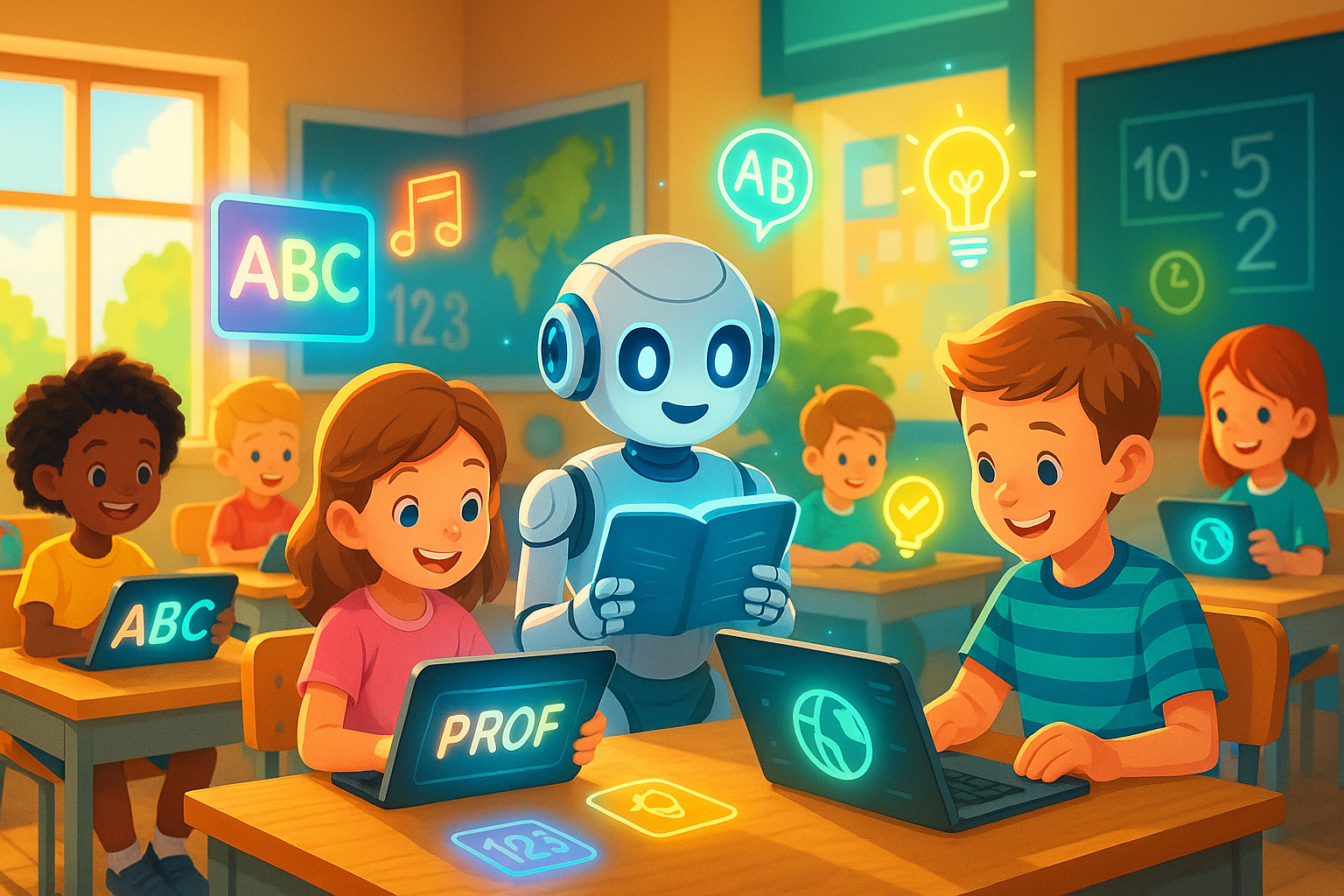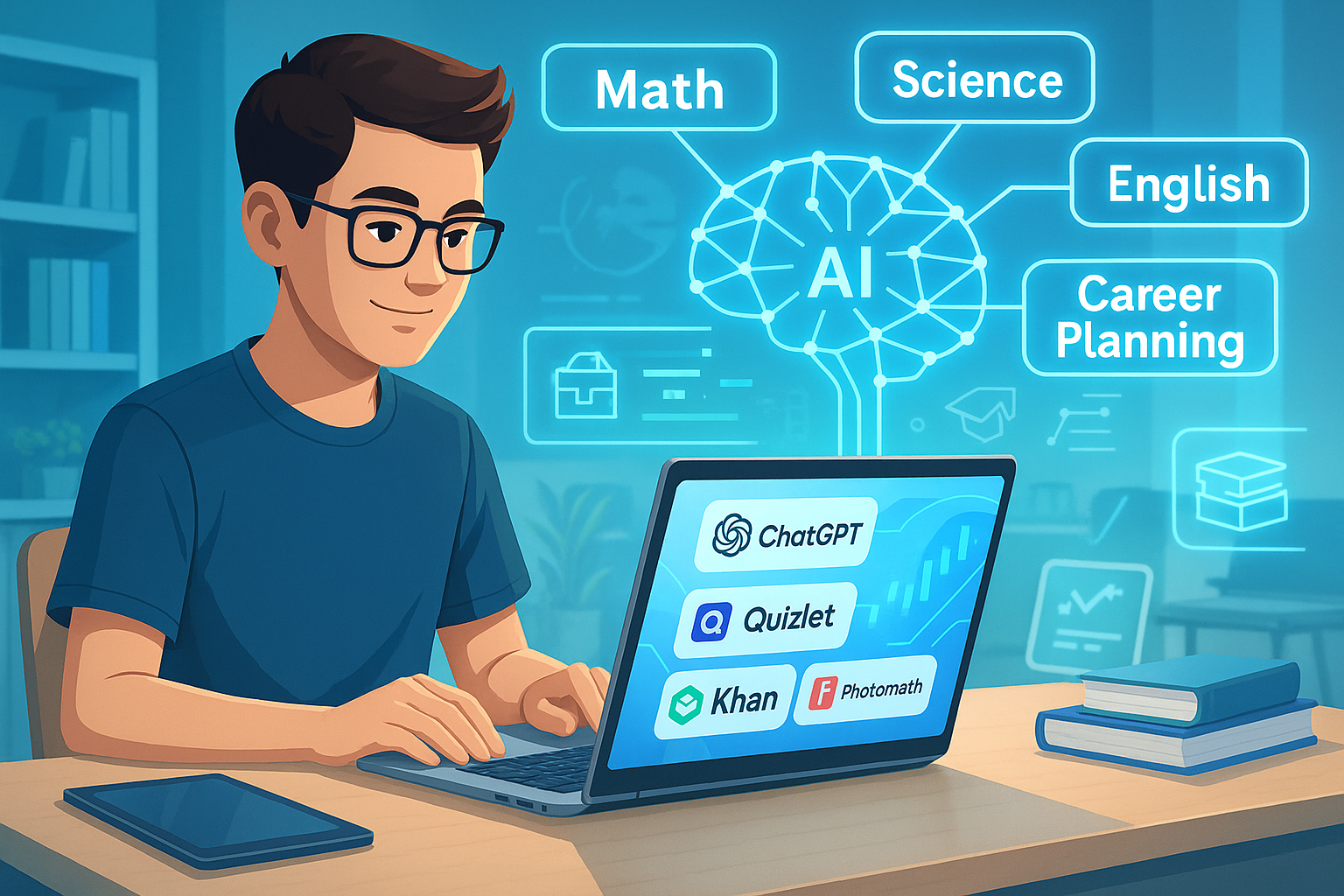
Welcome to the future of early education.
In 2025, AI isn’t just for tech-savvy adults or college students—it’s helping children as young as 5 years old learn better, play smarter, and grow into creative thinkers. From intelligent reading assistants to math-solving games and voice-interactive chatbots, AI is quickly becoming a valuable learning companion in elementary education.
But don’t worry, AI isn’t here to replace teachers or parents. It’s here to help them.
In this mega guide, we’ll explore:
- How AI fits into primary education
- Top AI-powered tools for kids
- Safe ways to use AI at home and in school
- What teachers and parents need to know
- Benefits, concerns, and future predictions
Let’s jump right in!
🧠 What Does “AI for Primary Students” Mean?
AI (Artificial Intelligence) in early education refers to age-appropriate, intuitive technology that assists in teaching basic concepts such as:
- Alphabet & phonics
- Counting & simple math
- Reading comprehension
- Creative storytelling
- Emotional development
AI apps and tools use machine learning, voice recognition, and natural language processing to:
- Adjust difficulty based on skill level
- Offer feedback in real time
- Encourage learning through play
- Keep children engaged and curious
💻 Real Use Cases of AI in Primary Classrooms
Let’s look at how AI is actually helping kids in schools and at home.
✅ 1. AI Reading Assistants
Children learning to read benefit hugely from apps that:
- Read books aloud
- Highlight words as they’re spoken
- Offer definitions and examples
- Let kids ask questions with their voice
🧰 Tools to Explore:
- Google Read Along – A reading tutor that listens to kids and helps them pronounce words
- Bookbot – Personalized AI reading assistant for early readers
- Epic! Books for Kids – AI-based recommendations for age and interest
✅ 2. AI Math Games and Practice
Learning math can be fun with adaptive games that:
- Adjust to a child’s ability level
- Reward success with badges or coins
- Explain mistakes in a kid-friendly way
- Use colorful animations and voice prompts
🧰 Tools to Explore:
- Prodigy Math – Fantasy-based math game powered by AI
- DreamBox Learning – Adaptive K–5 math curriculum
- Khan Academy Kids – Covers math, literacy, logic, and social-emotional learning
✅ 3. AI-Powered Creativity Tools
Young learners love to imagine—and AI helps turn imagination into creation.
🧰 Creative AI Tools:
- Tocomail AI Art for Kids – Draw and paint with AI suggestions
- Tales Factory – Kids can create their own illustrated storybooks with AI
- Scribble Diffusion – Turn simple drawings into detailed images using AI
✅ 4. Language Learning for Kids
AI tutors support early language development through:
- Listening and pronunciation practice
- Vocabulary building
- Interactive dialogues
🧰 Tools for Language Development:
- Lingokids – ESL & early English learning
- Duolingo ABC – Language learning focused on phonics and reading
- Speech Blubs – Voice-powered speech therapy for kids
✅ 5. Classroom Management with AI
Teachers are using AI tools to:
- Track engagement
- Monitor participation
- Help with attendance and mood detection
🧰 Tools:
- ClassDojo – Track student behavior and communicate with parents
- GoGuardian – Screen monitoring and classroom analytics
- LanSchool – Helps manage digital classrooms
🧒 Benefits of AI for Young Learners
Here’s why AI is making a real impact in early education:
| Benefit | How it Helps |
|---|---|
| 🧠 Personalized learning | Adjusts content based on age, skill, pace |
| ⏱️ More attention span | Engaging visuals and gamification keep kids focused |
| 🎯 Feedback in real-time | No waiting for a teacher to review mistakes |
| 📚 Encourages curiosity | Kids can explore at their own pace |
| 🧩 Helps with disabilities | Tools like text-to-speech & voice input empower all learners |
“My child reads more with Bookbot than with any physical book. It’s like having a talking buddy.” – Parent review
👨🏫 Tips for Parents & Teachers Using AI with Kids
✅ Safety First
- Always review app permissions
- Use parental controls
- Choose tools made specifically for children
✅ Choose Age-Appropriate Tools
Look for:
- COPPA-compliant labels (Children’s Online Privacy Protection Act)
- Clear educational value
- No ads or in-app purchases
✅ Don’t Replace Human Interaction
Use AI to enhance, not replace, storytelling, playtime, or teacher-led instruction.
⚖️ Potential Concerns to Address
AI is powerful—but here’s what to be mindful of:
| Concern | How to Handle It |
|---|---|
| 🔐 Data privacy | Use trusted platforms with strict privacy policies |
| 👀 Screen time | Set time limits and balance with outdoor play |
| 🤖 AI bias | Avoid tools that misrepresent cultures or languages |
| 😴 Passive learning | Encourage interaction, not just consumption |
🌎 Global Trends in AI for Primary Education
- 🇫🇮 Finland: AI added to preschool curriculum with playful learning
- 🇸🇬 Singapore: Personalized AI math platforms introduced in every K–6 school
- 🇮🇳 India: AI chatbots used in remote village schools for storytelling and basic education
- 🇺🇸 USA: 67% of elementary teachers now use at least one AI tool weekly
🔮 What’s Next for AI in Early Education?
Here’s what we expect in the next few years:
- ✨ AI-powered reading glasses that help kids read aloud
- ✨ Multilingual bots that support global classrooms
- ✨ Real-time emotion trackers to help with social-emotional learning
- ✨ Smart classroom walls that interact with voice commands
“AI isn’t the future of early education. It’s already here—and it’s playful, safe, and powerful.”

